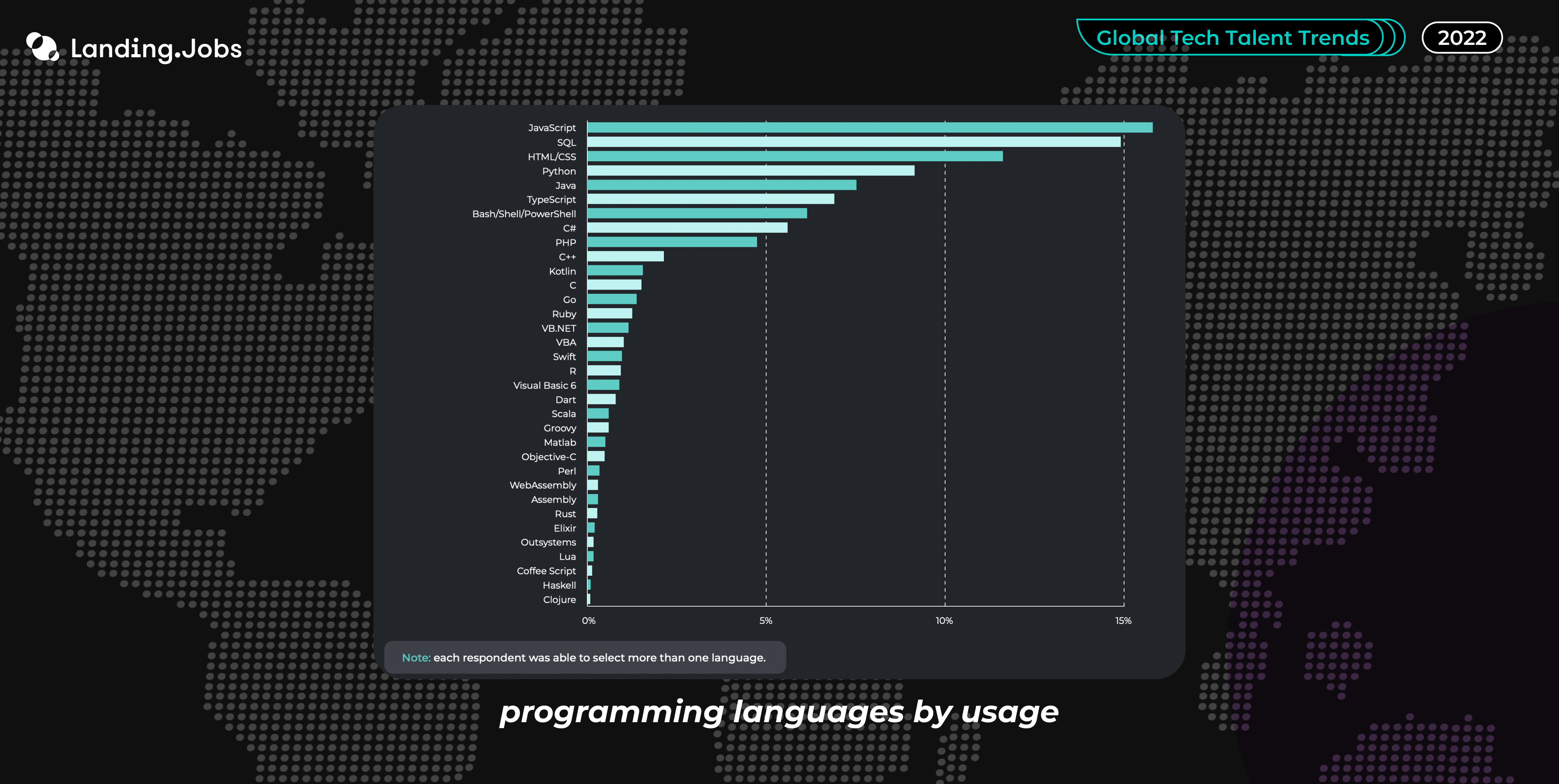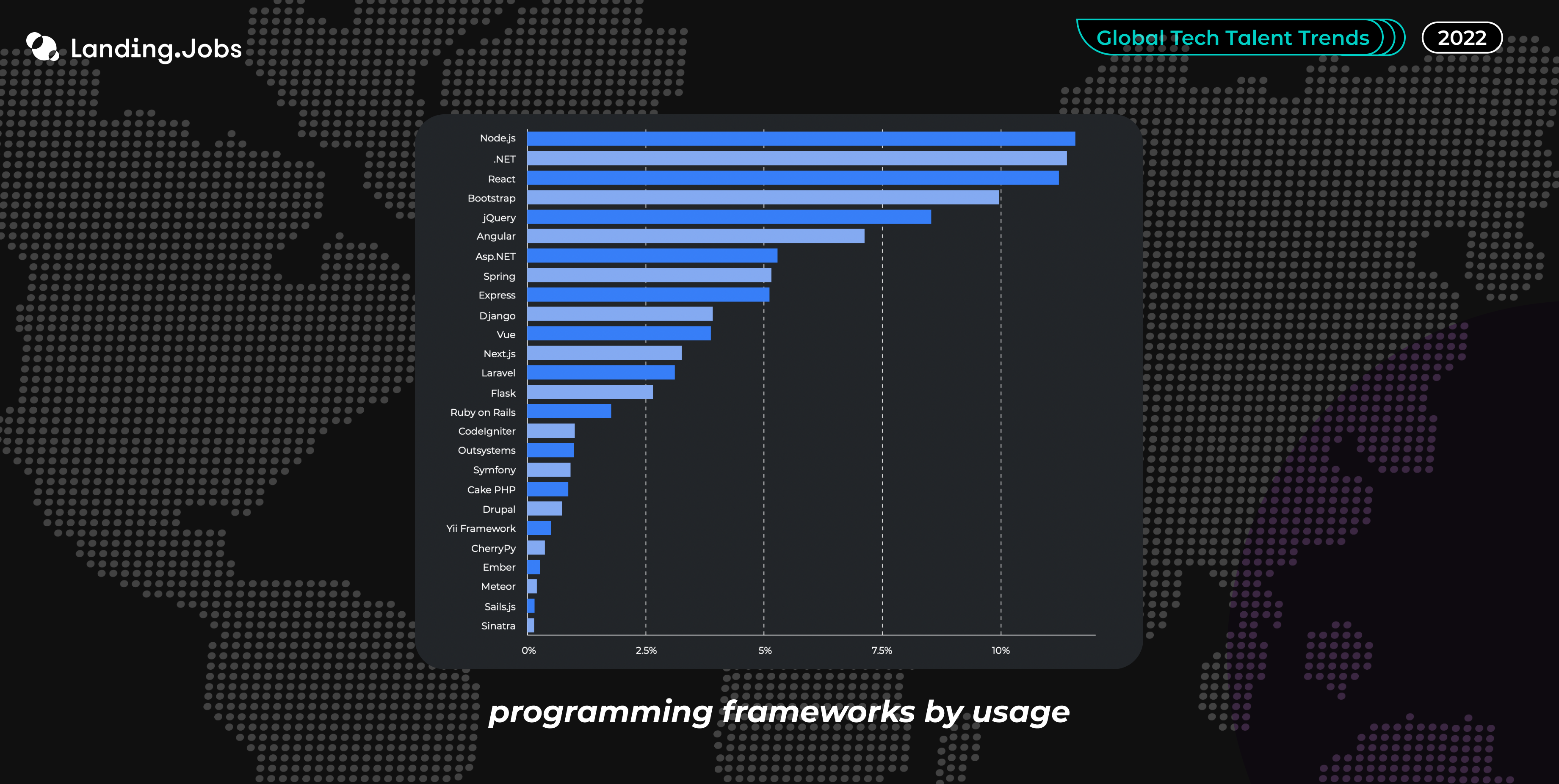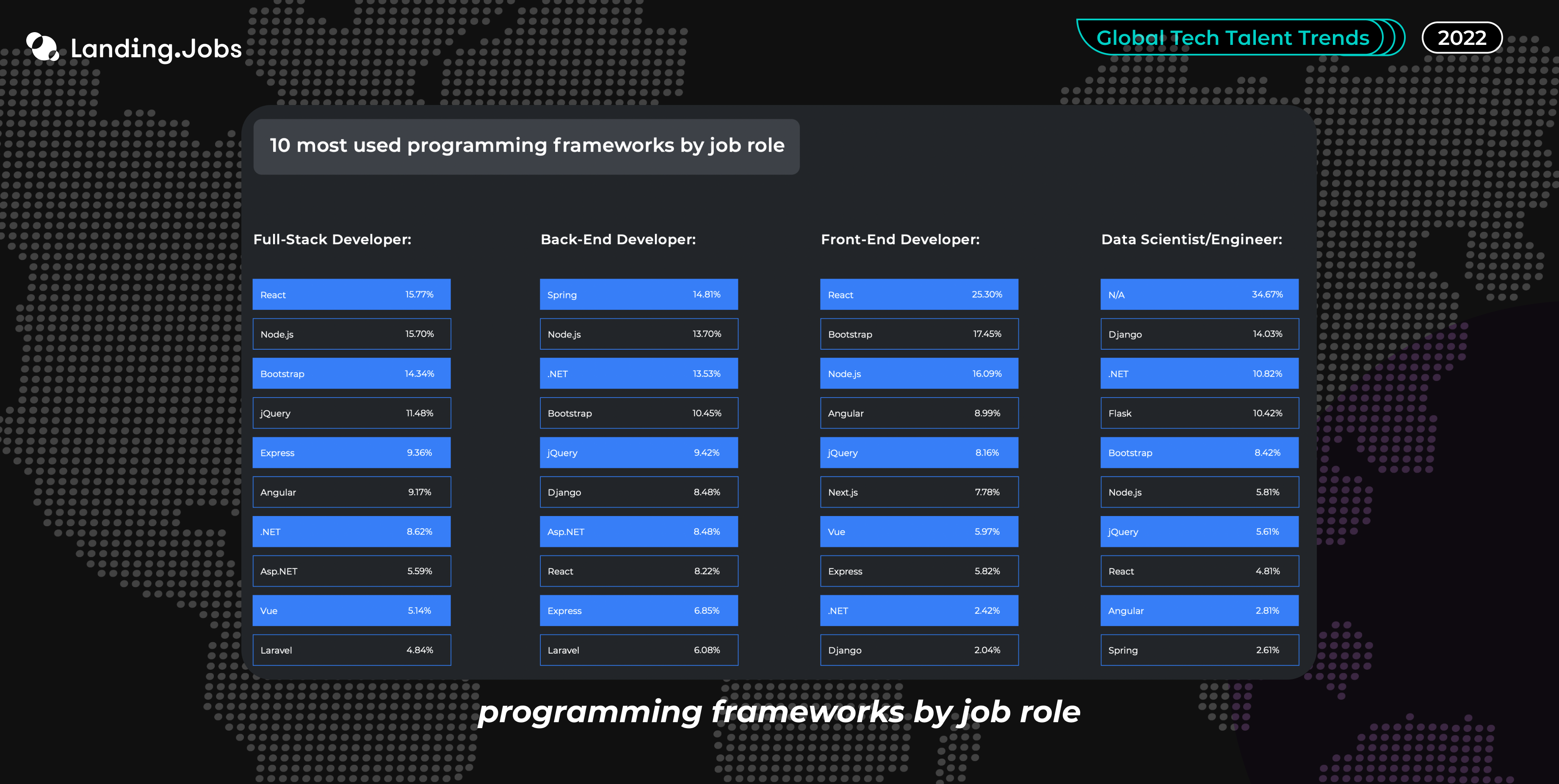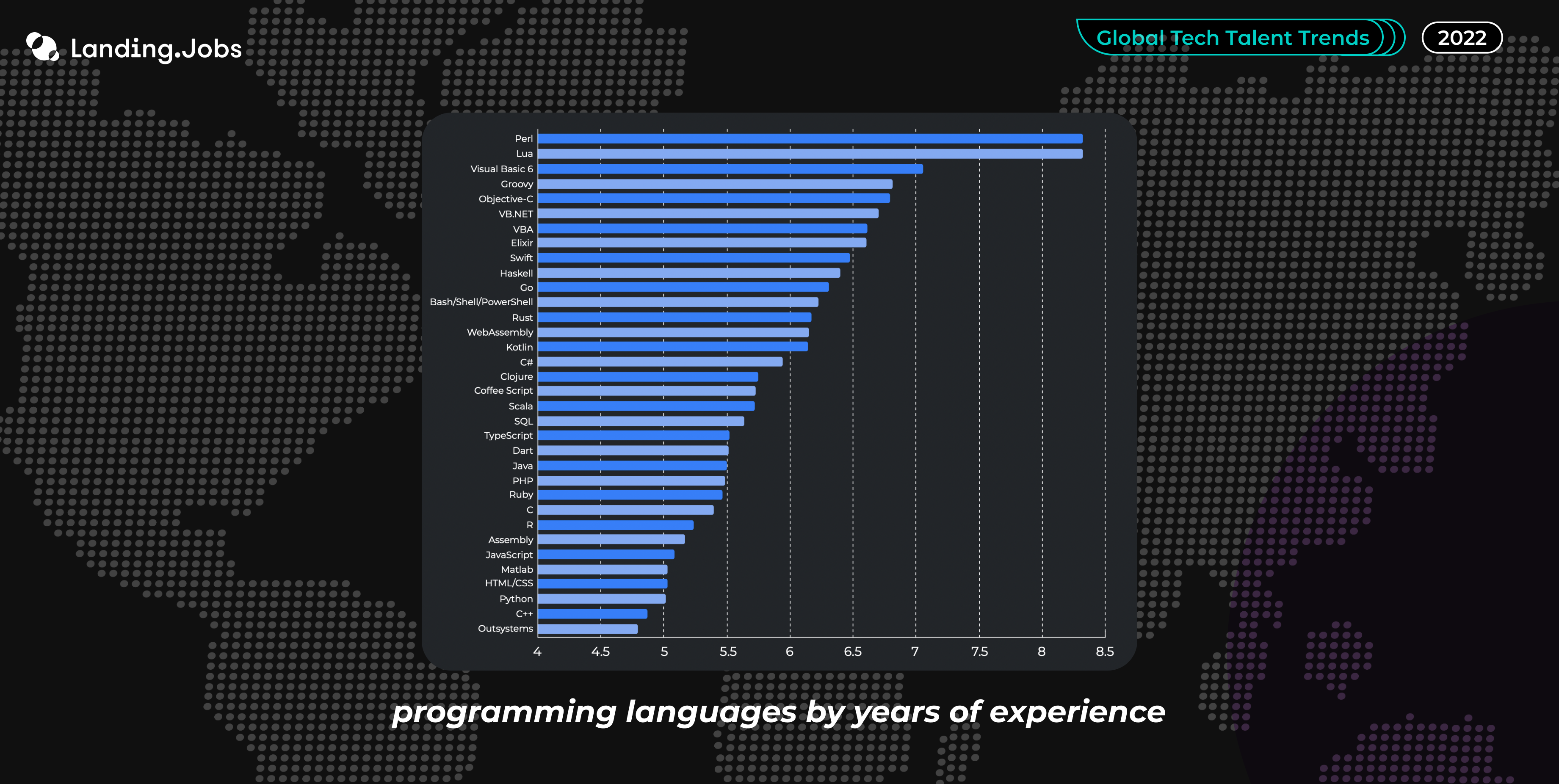Our newly released report, sponsored by FARO, dives into programming languages & frameworks regarding the major trends observed this past year.
Not only did we look into what languages and frameworks developers are most and least using, but also which ones are paying better (and worse), trends seen by gender and job role, and salary variation from 2021 to 2022.
This data is a great indicator of how tech has evolved in the last year, but it’s also extremely useful to make some predictions for the upcoming year. We all know the tech scene is constantly changing at an unforeseeable pace, so keeping up with trends through up-to-date information is paramount.
An informed developer is a developer who can make better decisions for their tech career. Let’s jump into the actual data!
What is trending and what is falling 🏆
In terms of programming languages, the most popular one by far on a global scale is JavaScript. Besides the structural SQL and HTML/CSS languages, Python gets to the top of the generic languages, probably with a large contribution from data-related work.
For all its history, Java remains one of the most widespread languages. Typescript is also on the rise, showing an increasing swing. And… VBA and Visual Basic 6 are still used, much to our surprise.
When we talk about frameworks, JavaScript is king again (unsurprisingly). Javascript-based frameworks count for more than 60% of the programming frameworks used, showing a clear dominance pattern.
.NET and Asp.NET are still alive and kicking, with Spring (Java) and Django (Python) in low but honourable positions.
RoR, despite all the potential and strength shown years ago, hasn’t evolved outside its niche (and cool) market position.
Let’s talk about money 💸
Less used languages like Perl, Lua, Elixir and others are better paid. Scarcity rules, so if you decide to invest in one of these, ensure you’re good because there aren’t a lot of job positions available.
Among the most used languages (check report #1), Python appears first, followed by Java and Typescript. If you want a good salary, don’t go for PHP, Visual Basic or VB.NET.
When we move on to frameworks, RoR didn’t get to have the dominance it seemed it’d have a few years ago, but it leads in salary. As in programming languages, less adoption correlates positively with a higher average salary. Ruby on Rails, Meteor and Ember champion the podium. We have Bootstrap, Laravel and Cake PHP at the lower end of the rank.
Job role, gender and years of experience — what role do they have? 💡
Gender
When we talk about gender influencing the use of programming languages, the biggest gap between men and women seems to be in HTML/CSS (women use the language more than men), followed by the more niche languages Bash/Shell/PowerShell and C# (where there are fewer women using them). SQL and Python are where there is more balance between genders.
Job role
In terms of programming languages, JavaScript, SQP and Python seem to be the winners across roles, but we check other job roles in the report like UX/UI Designer, Solutions Architect, Maintenance & Support, Quality Assurance/Testing, Mobile Apps Developer, Business Applications, DevOps Engineer, Computer & Network Security and SysAdmin Engineer.
As for frameworks, .NET and React are quite popular across job roles. Again, check the full report to see in-depth percentages for each job role mentioned above.
Years of experience
The big truth is that, when it comes to programming languages, less experience means widely used languages, and more experience means niche down. Perl and Lua are, by far, the programming languages used by more experienced developers. On the senior end of the spectrum, we have languages that are not very used — perhaps because developers only niche down once they have gained experience in mainstream ones.
Sinatra is a senior developer’s framework. Yii, Symfony and Drupal follow behind, showing that they are not for the “little league”.
The frameworks that are more used by tech professionals with less experience are Django, CherryPy, Bootstrap and React.
If you want to dive deeper into this data, download the full report here for free. The Global Tech Talent Trends is the largest community-based tech talent study, and its only goal is to empower tech professionals with the tools they need to make better career decisions. An informed community is an empowered community. ⚡️
Also, check out our webinar, where all of this data was discussed.
Join us in building better futures. Join the globalisation of tech work.
About FARO
FARO is an imaging company — and an imagining company. We imagine a better, more insightful and capable world realized through 3D digital means and measurement technologies. From the beginning, we’ve been helping our customers make better decisions more quickly and accurately than anyone in the industry. We believe if it can be dreamed, it can be measured. And if it can be measured, it can be realized.













0 Comments